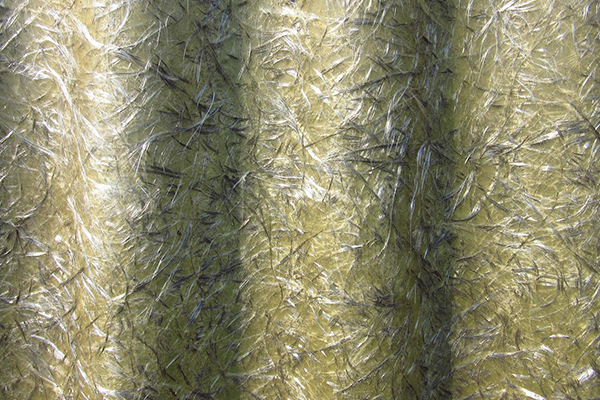
Don’t find yourself lacking the information needed to properly plan your project. Understanding the applications and durability of fiberglass will help you produce a more reinforced and long-lasting final product.
iccm20.org gathered essential information about the origin, composition, endless applications, and strength of fiberglass.
Fiberglass Origin
Glass fibers have been produced for centuries, but the earliest patent was granted to Hermann Hammesfahr in the U.S. in 1880. Then, in the late 1930s, an accidental discovery made by Dale Kleist was the breakthrough he, Games Slayter, and Jack Thomas needed to begin manufacturing “insulation-quality” glass fibers in commercial quantities, making the fiberglass used as insulation in buildings, stoves, refrigerators, and furnaces affordable.
Note: Fiberglass quickly became a popular substitute for asbestos in electrical, thermal, and acoustic insulation.
Fiberglass Composition
Fiberglass really is made of glass. In the process of manufacturing fiberglass, glass is heated until molten, then forced through superfine holes. This process creates glass filaments that are thin enough to be measured in microns. Fiberglass consists of numerous fine strands of silica polymers which may include alkali oxides, aluminum, boron, or other trace molecules. The resultant composite is durable, lightweight, and flexible when embedded within an epoxy matrix and cured.
Fiberglass Composite Durability
Fiberglass composites are among the strongest and most durable materials currently used globally. Unlike wood and other organic material, it won’t warp, rot or decay from moisture exposure, and will not give way to corrosion, insect infestation, mold, or mildew.
Fiberglass Applications
One of the best parts of fiberglass is its impressive ability to be molded into various complex shapes. This attribute, among other highly desired traits, makes fiberglass a popular material used in:
- Tape
- Cloth
- Rope
- Equipment handles(Hammers, axes, etc.)
- Roofing Material
- Reinforcement of asphalt, as a fabric or mesh between layers
- Helmets and protective gear used in construction and sports
- Drywall Patches
- Water slides
- Surfboards
- Boat and ship hulls
- Rowing vessels and oars
- Swimming pool forms
- Fish pond lining
- MRI scanner components
- Drum Sets
- Orthopedic casts
- Auto body parts, and sometimes entire auto bodies
- Antenna components
- Circuit boards consisting of alternating copper and fiberglass layers
- Wind turbine blades
- Pole vaulting poles
- Traffic signals
- Sculpture making
- Helicopter frame, components, and blades
- Airplane and rocket components
- Tent poles
Note: Due to fiberglass being a strong and lightweight alternative to cement and metal, you will find it is used in items and merchandise in nearly every way, shape, and form.

Advantages of Fiberglass
Fiberglass is a cost-effective alternative to traditional materials like concrete, steel, aluminum, and timber. The following are some more attractive advantages of this composite material:
- Cost-effective for complex shapes and designs
- Corrosion-resistant
- Excellent structural strength
- Superior strength-to-weight ratio
- High heat distortion temperature
- Electrically inert (non-conductive)
- Ability to be molded to precise specifications
Fiberglass can last up to 100 years, and it can be colored, shiny, or dull. It is low maintenance, anti-magnetic, fire-resistant, and weatherproof.
Disadvantages of Fiberglass
Fiberglass insulation is prone to moisture issues. Unlike alternative materials like sprayed foam insulation or foam board, wet fiberglass insulation loses its insulating properties until it dries out. With moisture issues, mold growth will occur when moisture is present in fiberglass insulation.
Types of Fiberglass
A Glass – This glass contains 72% silica (high alkali fiberglass contains 25% Soda and lime).
C Glass – This is a chemical glass made of sodium borosilicate (alkali-lime glass) with high boron oxide content.
D Glass – This is borosilicate glass with improved dielectric strength and low density.
E Glass – This glass is made of alumina-calcium-borosilicate. It is used where strength and high electrical resistance are essential.
ECR Glass – This is calcium alumino silicate glass possessing long-term resistance to strain, crack, and corrosion in acidic conditions.
AR Glass – This is high-quality alkali-resistant glass composed of alkali zirconium silicates used in cement and concrete.
R Glass – R glass is calcium alumino silicate glass with high-strength, high-modulus glass, and significantly lower cost than “S.”
S & S2 Glass – These are magnesium alumino silicate glasses manufactured for aerospace applications.
Why is Fiberglass So Popular?
One of the principal reasons fiberglass is chosen as a material for so many products is because of its light weight. It is also extremely strong for how light it is. This makes fiberglass an excellent fit for applications where strength and less weight are needed. For example, airplanes need to be light enough to quickly get lift and need to be strong enough to withstand the elements and pressure they must endure.

Fiberglass Composites
In this article, you discovered information and history about the applications, advantages, disadvantages, durability, and types of fiberglass.
Understanding the benefits and applications of fiberglass in manufacturing and building will help you produce a superior and durable final product or construction.
Ignoring the classes and properties of fiberglass could cause a knowledge gap that leaves you at a disadvantage.
Sources:
einsteinmed.edu/administration/environmental-health-safety/industrial-hygiene/fiberglass.aspx
princeton.edu/~maelabs/mae324/glos324/gfrp.htm
libguides.kettering.edu/c.php?g=473752&p=3241840
usna.edu/Users/mecheng/pjoyce/composites/Short_Course_2003/2_PAX_Short_Course_Fibers.pdf
